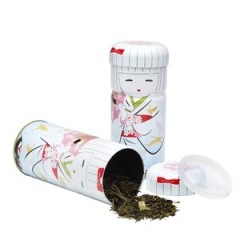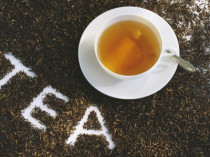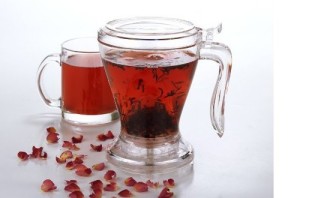
The Steeping Experience
My favorite types of tea are flavored black, white, and green. I'm more particular about my greens though as I'm not a fan of the earthy tones. I prefer fun flavors like mango, almond biscotti, roasted chestnut, etc. I can do some simple oolong, but that earthy taste just does not soothe my palette. One tea blend my palette does not agree with is rooibos (pronounced roy-bus). I've tried different rooibos flavors, and its a miss for me 9 out of 10 times.
Down to the basics --
There are four basic steps:
- Heat water (note that different types of tea have different temps)
- Add tea (preferably loose leaf!)
- Steep (different tea types have different steeping times)
- Strain and enjoy!
Sometimes, you may re-steep if the leaves indicate this. I do not commonly practice this, but I find if I am going to re-steep, greens are the ones I usually try this with.
#1 rule -- Brew teas loose, not in a small tea ball or other confined space. This allows the leaves to open fully and release all of the flavor and healthful qualities.
Want to taste tea like a professional? Here are some tips:
First: Examine the dry leaf; Look for consistency in the leaf particle & size. Check for fresh aroma.
Then, Check the steeped aroma; Look for fresh bright scent, no stale or flat notes.
When sipping: Take note of the initial burst of flavor on your palate, is it strong, sweet, bitter, malty, earthy, fruity, peachy, roasty, or what? For best flavor make sure the liquid comes in contact with your entire palette: slurping, swishing, and swirling the liquid really does help.
Notice the flavor as you swallow: does it change, smooth out, is it silky? How is the texture of the tea as it sits on your tongue?
Note the flavor immediately after you swallow, this is the aftertaste: is it sweet, bitter, cleansing, astringent (i.e. makes your mouth pucker)?
Note the flavor 10-30 seconds after you swallow: does it linger?
Now, take your time, and just enjoy the tea.
 Tea containers do NOT need to be this fancy. Your leaves will be fine in black or silver containers too!
Tea containers do NOT need to be this fancy. Your leaves will be fine in black or silver containers too!
STORING TEA:
With the exception of pu’er tea, all other tea should be stored in an airtight vessel. It is best to have the storage container be no larger than the amount of tea stored. This prevents oxygen from depleting the flavor of the teas.
And because light (particularly fluorescent and sun light) over time can have a detrimental effect on the leaf, make sure the container is also light tight. “But what if I store my tea in clear Mason jars”, you ask? Simply place your jars in a dark cupboard or pantry.
Please do not keep your tea leaf in the refrigerator as over time, the moisture will damage your delightful tea.
It is important to mention that you keep your tea away from strong odors and smells. Storing your tea in the same cupboard next to your garlic and onions is asking for some strange tasting tea, indeed!
Pu’er tea needs air in order to continue maturing and that is why it is often wrapped in paper or bamboo leaf. We recommend storing your pu’er in ceramic, clay or cardboard boxes rather than out in the open and subject to drafts of cold or warm air.
Recap: Light tight, airtight (with the exception of pu’er tea), away from strong odors, and not too hot and not too humid.
(taken from http://shopmandalatea.com/tea-storage/)
















